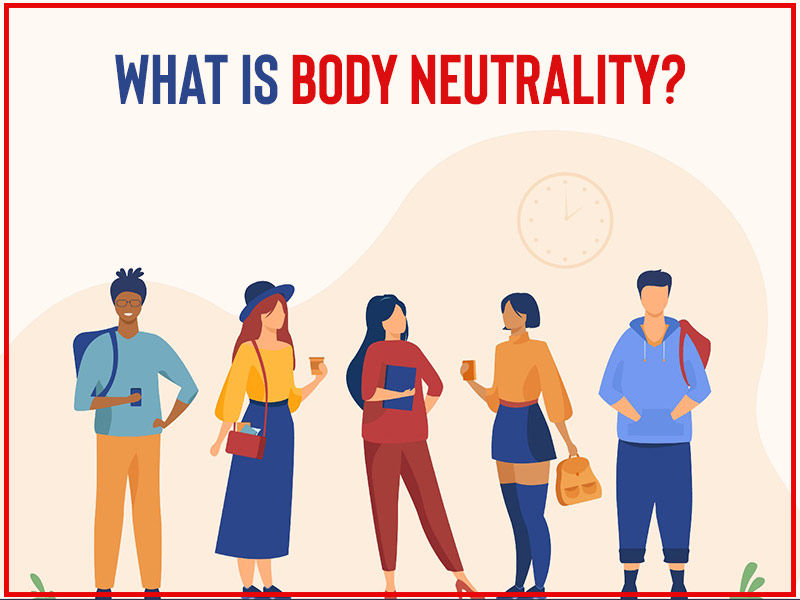
Every place has its own set of beauty standards, and so is the case with India. Those who are skinny and fair are not just applauded but often celebrated in large parts of India. On the other hand, those who weigh heavier on the scale are not just looked down upon, they are often ridiculed, often by their family and friends. Crazy diets and harsh workout regimens further aggravate the problem by pushing people to put themselves through so much to fit into a set standard of beauty. The need to bust these harsh and at times unrealistic norms of beauty led to the rise of the body positivity movement, which emphasised loving your body no matter what. However, there is a new movement, different from both body positivity and skinny culture, which requires you to focus on what your body does for you, rather than on how it looks. It’s called body neutrality. But before we delve into its details, let’s understand the different facets of body positivity.
Table of Content:-
What Is Body Positivity?

(Photo Credit: Freepik)
The roots of body positivity are believed to lie somewhere in the 1960s. The movement was aimed at ending fat-shaming as well as discrimination against people who are overweight or obese. However, the term body positivity was coined much later, in the 1990s when a psychotherapist started a website by the name bodypositive.org. The concept gained much traction and popularity with the popularity of social media. Despite their several flaws, platforms such as Facebook, Instagram, and Twitter have served as platforms for people to share their idea of beauty. There are over 9.3 million Instagram posts under #bodypositivity, more than 1.7 million under #bodylove, and 6 million under #loveyourbody. Despite its ‘positive’ intent, the body positivity movement has garnered its fair share of criticism.
- Many criticise it for disregarding the medical complications caused by obesity. Being overweight or obese increases a person’s risk for serious health issues such as cardiovascular diseases, type-2 diabetes, hypertension, high cholesterol, stroke, arthritis, and even certain cancers such as that of breast and colon.
- Just like skinny culture, body positivity pays too much emphasis on physical appearance, some say. Associating one’s self-worth with appearance is never good for the person.
- Feeling comfortable in your skin is extremely crucial for a fulfilling life. Equally important is to maintain a healthy weight and take care of one’s body.
Also read: 8 Dietary Tips To Improve Body Balance, States Nutritionist Shilpa Singh
What Is Body Neutrality?

(Photo Credit: Freepik)
Now coming to body neutrality, the concept first gained traction in 2015. It was after Anne Poirier, a US-based intuitive eating counsellor held a Body Neutrality Workshop in Vermont. An alternative to both skinny culture and body positivity, body neutrality requires you to shift focus from your physical appearance to what your body does for you. Hence, instead of cellulite and thick thighs, just remember that your legs allow you movement. Similarly, your arms might be flabby, but they allow you to fulfill so many tasks.
- As part of this movement, you adopt a neutral approach towards your body, with no compulsion to love or loathe it.
- Focusing on what your body does for you needs some mindfulness, which is also good for good mental health.
- When you start focusing on your body, internally not on its physical appearance, you might start caring about nutrition, and physical activity, crucial for the body’s optimal functioning.
Also read: A Kettlebell Champion’s Fitness Journey From BodyBuilding To Creating A Work Life Balance
Body Positivity vs Body Neutrality: Which One Should You Choose?
Both body positivity and body neutrality are distinct concepts with different aims. And, there is no need to choose from either of them. While body positivity is about feeling comfortable in your skin and being confident about your body, body neutrality is about giving proper nourishment and whatever it takes for a healthy body. While the former promotes self-esteem, the latter promotes mindfulness. Both have their share of advantages and you can embrace the positives of both.
In the end, you should remember that it’s OK to not feel good about your body all the time. You might not feel good after having a huge meal of fast food, or when you eat something extremely unhealthy. There are times you feel bloated, confident, and unhappy with how you look. But these are phases, and you should see them as such. What you should focus on instead is improving your health by providing your body with nutritious food and exercise, which it needs.
Photo Credit: Freepik
Also watch this video
How we keep this article up to date:
We work with experts and keep a close eye on the latest in health and wellness. Whenever there is a new research or helpful information, we update our articles with accurate and useful advice.
Current Version